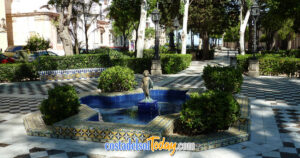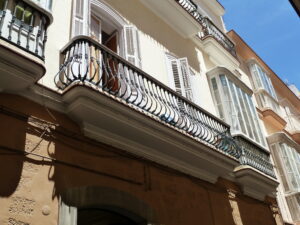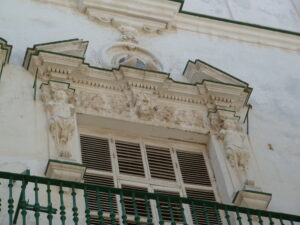Cádiz, regarded as the oldest inhabited town in Europe, Cádiz dates back to 1100BC. The town has a long collection of spectacular beaches and returning visitors rave about the delicious Cádiz fish, amazing monuments and intriguing museums.


Cádiz
Regarded as the oldest inhabited town in Europe, Cádiz was found as “Gadir” from the Phoenicians at 1.100 BC. The town has a long collection of spectacular beaches and returning visitors rave about the delicious Cádiz fish, amazing monuments and intriguing museums.
Most of all, enamored visitors talk lovingly of the gaditanos, and the crazy, yet enjoyable Carnival whose upbeat songs will make you long for the town as soon as you’ve left. Here we find 10 essential facts about Cádiz. The Cádiz Carnival is broadly known as an enormous street party with eleven days of creativity, enjoyable and mass participation.

The town spends the entire year preparing its biggest carnival celebrations. Fancy costume or dress is vital for the celebration, at least on the first Saturday and throughout the parades. There are two chief parades from the carnival, El Gran Cabalgata and La Cabalgata del Humor. Cádiz is a town with a rich history. The Phoenicians called it Gadir, meaning walled stronghold’. In the mean time, the Berbers changed the term into agadir or walls’.
According to Greek legend, Hercules founded the town following his 10th labor and named it Gadeira. The Moors called the town Qadis when they ruled for 500 years.
Its renewed prosperity outdated from the discovery of America in 1492, when it became the headquarters of the Spanish treasure fleets. Throughout the sixteenth century it repelled a series of raids from Barbary corsairs, in 1587 its harbour transport was burnt by an English squadron under Sir Francis Drake. Following being blockaded and bombarded by the British, it was surrounded by the French 1810-12, through that time it served as the capital of all of Spain not under the control of Napoleon. There the Cortes met and enacted the renowned liberal constitution of March 1812. The reduction of the Spanish colonies in the Americas dealt a blow to the trade of Cádiz where it never recovered.
Its decrease was later accelerated from the disasters of the Spanish American War of 1898 and from its antiquated harbour works. After 1900, considerable improvements were made in quayside structure, and retrieval proceeded steadily. From the Spanish Civil War Cádiz dropped to the Nationalists almost at once and served as an essential port of entry to get reinforcements from Spanish Morocco.
In 1947 the town suffered great harm from the explosion of the navy weapon store. Notable landmarks include the old cathedral, originally built by Alfonso X of Castile and reconstructed following 1596, and the Baroque cathedral, begun in 1722 and completed in 1838, in which the composer Manuel de Falla is buried and which holds a spectacular collection of art treasures. Other landmarks include San Sebastiá, n and Santa Catalina castles, numerous museums, and also the famous Torre de Vigí, a, a signal tower at the middle of the town.
Cádiz, an Ancient City
Cádiz is an ancient port city in the Andalucia region of southwestern Spain. The home of the Spanish Navy, the port boomed in the 16th-century as a base for exploration and trade. It has more than 100 watchtowers, including the iconic Torre Tavira, which was traditionally used for spotting ships. On the waterfront is the domed, 18th-century Cádiz Cathedral, featuring baroque and neoclassical elements.
'Archways & Entries' #oilpainting #oilsketch #oiloncanvas #whitevillage #entries #arches #alleys #vejer #widow #delafrontera #cadiz #andalucia #spain #BigArtBoost #draw2live #Draw365 #ArtsDay pic.twitter.com/UcgTssGfw0
— tim southall (@timsouthallart) March 21, 2021
Situated on a narrow slice of land surrounded by the sea‚ Cádiz is, in most respects, a typically Andalusian city with a wealth of attractive vistas and well-preserved historical landmarks. The older part of Cádiz within the remnants of the city walls is commonly referred to as the Old Town (Spanish: Casco Antiguo). It is characterized by the antiquity of its various quarters (barrios), among them El Pópulo, La Viña, and Santa María, which present a marked contrast to the newer areas of town.
The Old City’s street plan of narrow winding alleys connecting large plazas. A lot can be done inside these buildings if you are good at walking — though only when it comes time or even before dawn! Just walk past many historic structures that may hold their architectural value today but have been badly damaged from fire damage over thousands years ago. These include la San Juan de Cañeta, built between 1360–1340 AD; Lleida Dei Diamantula, 1515–1508; Girona Ceuta, 1290–1480; Valladolid Villa Zona Víctora 1430–1500.
Its central portion encompasses nearly 800 square meters or roughly 60 acres over 300 foot wide spaces. Smaller houses hang like curtains below windows; each house contains around 200 rooms housing up at least one resident. For families living there can be communal terraces from where guests could take their evening strolls past some spectacular views overlooking beautiful scenery during daylight hours.
This neighborhood had been transformed since medieval times when it became known throughout southern Europe as “La Villa del Nunez” after being once owned jointly between King Ferdinand II III & his wife Katherine IV. Today this area also serves as a center point for tourist activities such sports teams’ training sessions, restaurants and bars.
Original, Professional Photography of Cádiz
Purchase original, professional photography of Cádiz and many more wonderful places in Spain from the following…
- ShutterStock.com: https://www.shutterstock.com/g/FreeAssortment
- 123rf.com: https://www.123rf.com/profile_freeassortment
Social Media
- Twitter.com: https://twitter.com/GMendel11
- Instagram.com: https://www.instagram.com/freeassortment/
- Facebook.com: https://www.facebook.com/profile.php?id=100018000555377








